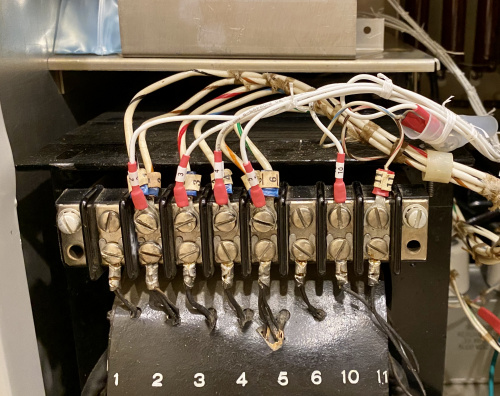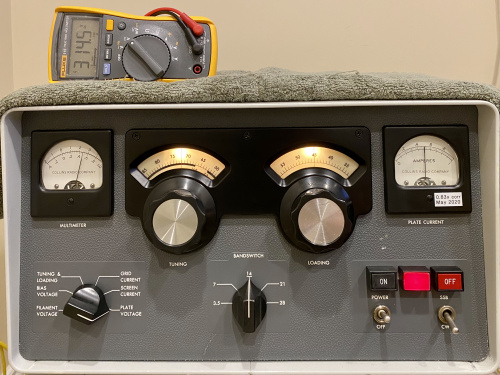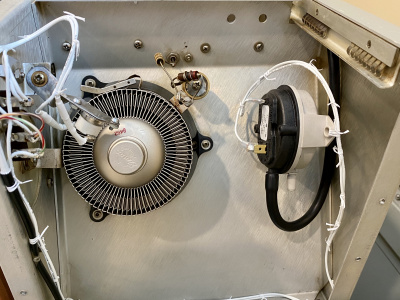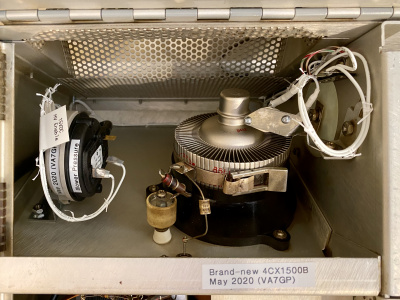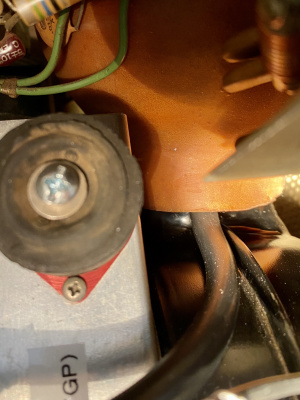Updates and Changes: Difference between revisions
No edit summary |
|||
| Line 26: | Line 26: | ||
File:Air_sense_hose_under_boot.jpeg|Air-Pressure sensing tube simply stuck up between blower nozzle, and flexible coupling-boot |
File:Air_sense_hose_under_boot.jpeg|Air-Pressure sensing tube simply stuck up between blower nozzle, and flexible coupling-boot |
||
</gallery> |
</gallery> |
||
=Dial Lights "ON" when Amp is Ready= |
|||
Revision as of 17:51, 12 August 2020
Raising CW Plate- and Screen-Voltages
Collins' reduction in High Voltage and Screen Voltage when using CW mode held back the 4CX1500B gain, and total-power. I was almost at the point of using the SSB setting for CW (as many do), when Chet VE3CFK pointed out...
That feeding both the primary wires from the front-panel-switch to the SSB connections on the transformer would give me a constant 3kV plate-voltage, and the elevated screen-voltage, no matter the mode. In fact, doing this means the only difference between SSB and CW is the negative grid-bias, and the resulting Class of operation.
The realization of Chet's suggestion: simply moving the CW-primary-power wire from Term #1 to Term #2, and similarly moving Term #6 to Term #5:
Now I have good gain and total power! Thanks, Chet! Here's a view of comfortable operating conditions now, for CW:
Thermal Overload Switch K102
My thermal sensor kicked my amp offline a couple of times, at only modest power-levels. Perhaps decades of time have taken their toll on the sensor; perhaps tube-changes have un-calibrated it; certainly my blower-motor-change will have altered it's response. The purpose of the thermal sensor: to open the HV-enable 12V circuit and K203 (primary AC power) if the tube gets too hot. The tube can get too hot with either excess dissipation, or lack of cooling-airflow.
I changed this protection to accurately focus on protecting the tube against overtemperature and also against loss of cooling airflow.
- Thermal and Pressure switches to replace Collins Overtemp K102
